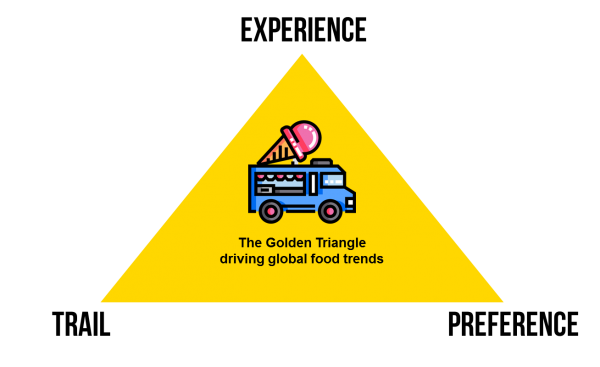Order, click, post, eat. The Instagram-generation contributes actively to global food trends. From the emergence of new dishes to the nostalgia from old childhood snacks, from café-hopping to the discovery of Michelin-star restaurants, and from novel ingredients to the fusion of flavours.
So, what exactly drives these food trends? We believe they are – experience, trail and the preference of consumers.

The highly acclaimed foodie handbook, The Michelin Guide, offers a secret formula to predicting true gastronomic experiences and the ones that will make foodies talk:

Experience
With Burpple, Facebook Check-ins and Instagram follows, it is easy for foodies to identify places worth visiting. There is an increased enthusiasm through online chatter among consumers for new gastronomic experiences as restaurants leverage digital marketing platforms to advertise their latest deals, accommodating to the demands borne from the foodie culture. The trend has seen foodies expressing interests in exploring authentic ethnic flavours, new meat cuts and vegetable-orientated cuisine. Individuals are seeking new adventures through new gastronomic experiences and enjoying the choices available to them. These adventures are usually sought from reviews and conversation buzz on social media where restaurants like Sydney’s Quay and Thailand’s Thipsamai attract visits from travellers all over the world, eager to get a first-hand experience of their highly acclaimed culinary products. Dishes range from amuse-bouches – off the menu chef recommended hors d’œuvres – served in Sydney’s fine dining restaurant, to traditional mains like Pad Thai in Bangkok’s Michelin awarded street vendor.
Experience, however, is not confined to specific food places. They can be food that has been the talk of the town such as the Cali Croissant or better known by its street portmanteau Crossushi, only available in Mr Holmes Bakehouse in San Francisco.
Trail
While experiencing new dishes, consumers inevitably hop on trails paved by fellow food enthusiasts, with articles curated for those actively seeking something new and delicious. Established media and entertainment sites like Time Out and applications such as Foursquare and the Entertainer provide guides, options and good deals on food experiences. Most online newspaper sites like The New York Times and The Guardian have Lifestyle sections, which include dining recommendations and reviews for readers keen on checking out the next hot dish or food place. Common categories among the sites are cafes, dining, and the latest culinary landscape. Wanderlusts often blog about the hottest food trails, so if you have not already, get onto the bandwagon: Bangkok Food Trail, Penang Food Trail and across the Pacific, Oregon Food Trail introduced by Lonely Planet.
Preference
With enough variety out there, the third food trends driver, following experience and trail, is individual preference. With endless lists of deals and recommendations, there is something for everyone, including those observing specific dietary restrictions. Recent years has seen a surge in the adoption of veganism, as communities are made aware of the benefits it has on the environment. Since restaurants are now accommodating to those demands, it is much easier now for individuals to stick to their preferences. Popular food preferences include foods with high health benefits and those sourced ethically. According to the food trend spotted by Forbes, mindfulness topped the chart as consumers are more aware of the consequences mass production incurs on the environment, as well as on the wage of workers in the relevant production industries.
Dieting and healthy eating is a preference for many. But, how does one satisfy their cravings while eating something bland? ‘Mukbang’ trend seems to have an answer to this question. Mukbang (according to Wikipedia) is:
“an online audiovisual broadcast in which a host eats large quantities of food while interacting with their audience.”
Mukbang triggers ASMR (Autonomous Sensory Meridian Response) where our mind positively responds to sounds like crunching, slurping, and chewing.
Implications for Brands and Marketers
High accessibility to social media and the discernible online sharing culture is defining millennial lifestyle. With options in abundance, gastronomical discoveries are their little getaway from the daily banalities. Such gastronomic discoveries are mostly made online. Consumers either search for new food experiences or stumble upon various food options on social media. Therefore, engaging content marketing is essential for brands to attain a greater consumer outreach.
This content, whether it’s posted as online reviews, Facebook, YouTube or Instagram, needs to be credible. Well-informed consumers expect transparent information in content posted (including honest images, ingredients used) and the experience it provides in relation to current trends as they would eventually seek for a shared experience among the foodie community.
Ones online share can be discovery for others. So, experience new dishes, venture on food trails and eat what makes you prefer. Go scout, snap and but, don’t forget to share.
Nur Shimma Abdul Rahim, Insights Analyst, Isentia Singapore
Prashant Saxena, Head of Insights & Innovation SEA, Isentia


